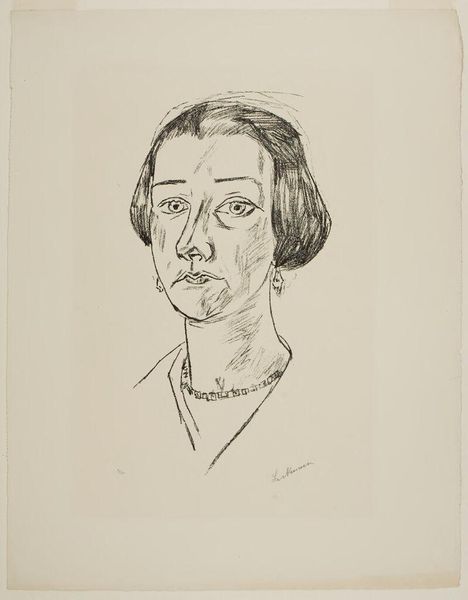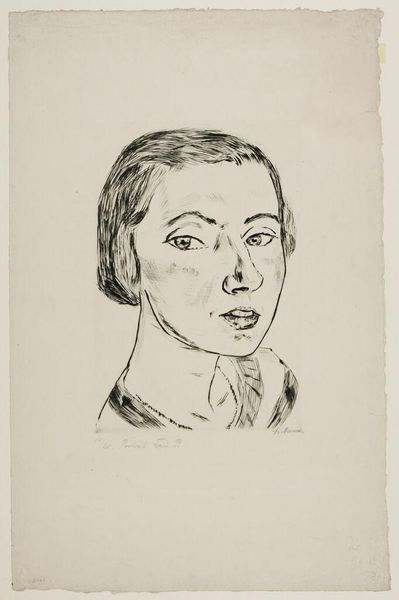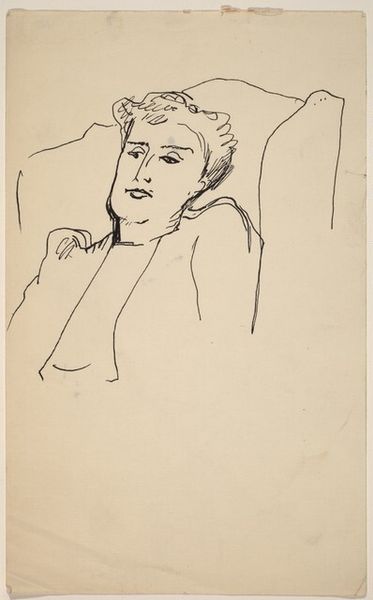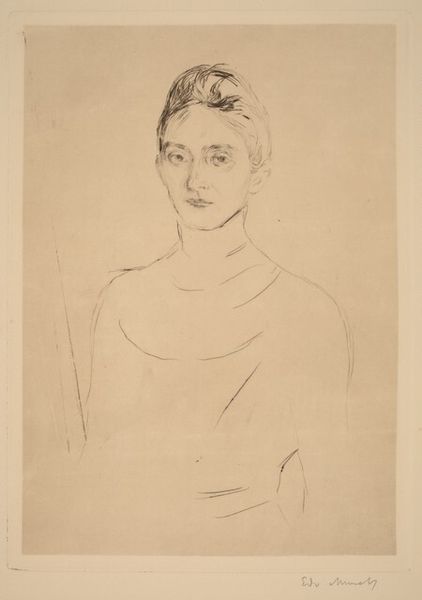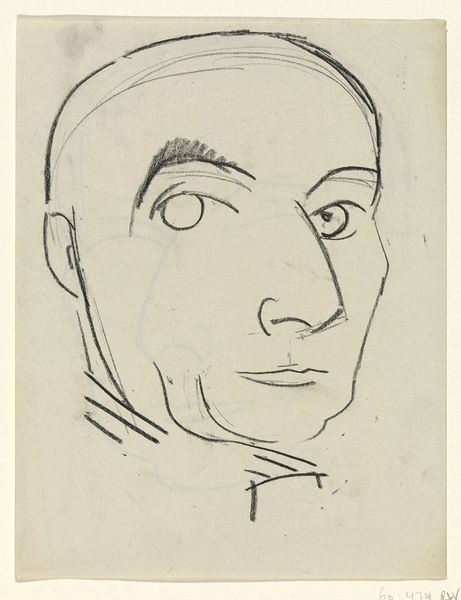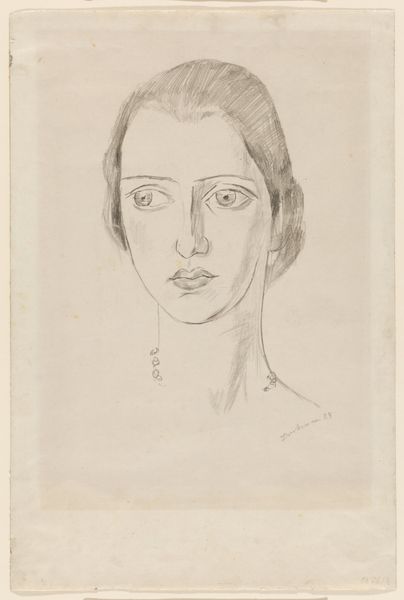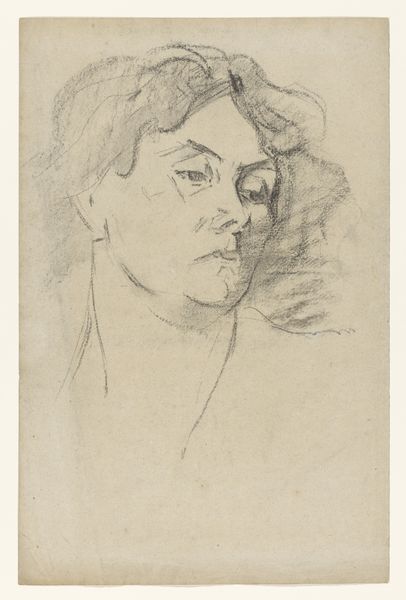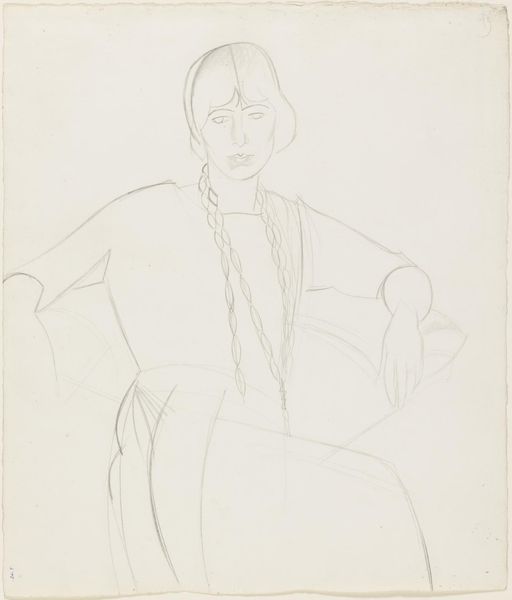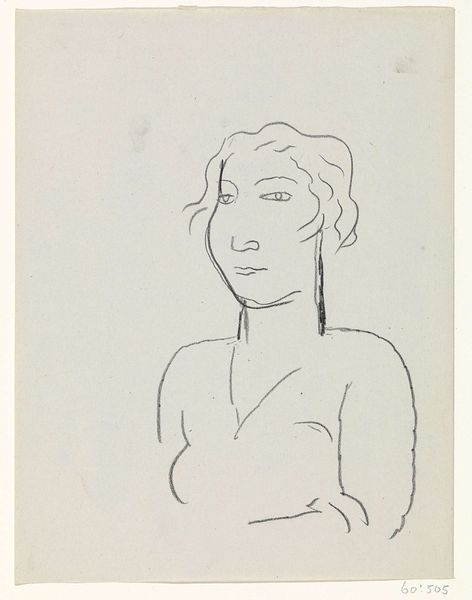
drawing
#
drawing
#
imaginative character sketch
#
light pencil work
#
pencil sketch
#
personal sketchbook
#
idea generation sketch
#
ink drawing experimentation
#
france
#
sketchbook drawing
#
portrait drawing
#
watercolour illustration
#
sketchbook art
Dimensions: 11 x 8 1/2in. (27.9 x 21.6cm)
Copyright: No Copyright - United States
Curator: At the Minneapolis Institute of Art, we find “Portrait of a Woman,” a drawing likely from the 20th century, attributed to Albert Marquet. Editor: There's a curious directness to it, isn't there? The sparseness of the lines actually intensifies her gaze. I find it quite haunting. Curator: Absolutely. Considering Marquet’s historical position, his involvement with the Fauves, this seems remarkably subdued. It’s a glimpse into a more introspective practice, perhaps outside the pressures of exhibition. It suggests a dialogue with portraiture conventions in a rapidly changing art world. Editor: It's almost disarming in its simplicity. The very thinness of the line – is that pencil, or perhaps a diluted ink? It lends her a sort of ethereal presence. The face is remarkably well-structured through these lines, and how subtly her garments are being evoked with so few markings! Curator: These more intimate sketches provide a critical counterpoint to his better-known landscapes and cityscapes. Consider the evolving role of women in French society at the turn of the century, the changing ideals of beauty…this drawing operates within a charged, dynamic cultural space. What can she, as the sitter, possibly communicate? And does she conform, or challenge her social roles? Editor: It strikes me that the focus on her face has very compelling geometry to it. Look at the subtle angle of the eyebrows mirrored by her mouth! These little formal decisions invite you to contemplate not just her presence, but her thoughts about being observed in the moment the portrait was sketched. Curator: That close formal observation is enlightening! For me, however, such a rendering offers a lens through which we see evolving artistic identities within the context of broader socio-political currents of the era. How are conventions subverted and who benefited? Editor: Indeed, context is crucial! But by zooming in we note how line, form, and balance carry immense power to shape experience... almost separate from external cultural and socio-political factors! Curator: Well, both readings hopefully provide ways to understand better the artistic climate surrounding Marquet! Editor: It’s those kinds of dual possibilities that keep these works so eternally enriching to observe, agreed!
Comments
No comments
Be the first to comment and join the conversation on the ultimate creative platform.

